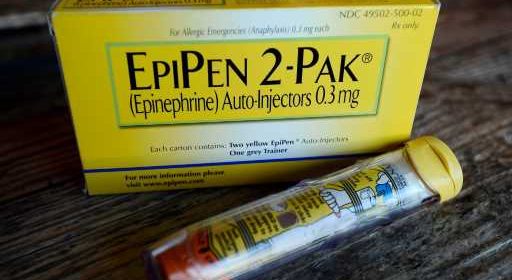Change to EpiPen cost-cap bill would let drugmakers offer alternative

A bill capping the out-of-pocket cost of EpiPens in Colorado could allow drugmakers to substitute their own programs under certain circumstances, a move some advocates say could reduce access to the life-saving medication.
House Bill 23-1002 would create a program allowing residents to access epinephrine for no more than $60 for a pack of two auto-injectors, starting in January. It would operate similarly to the state’s $50 cap on the out-of-pocket cost of insulin, with drugmakers directed to reimburse pharmacies for the difference between the capped amount and the cost of replacing the product.
An amendment added in the Senate’s Health and Human Services Committee would allow manufacturers to instead offer their own affordability program, provided it limited out-of-pocket costs to $60 and was available to anyone who isn’t covered by a government insurance program.
A two-pack of EpiPens costs $650 to $700 if you’re paying cash, according to Drugs.com. A generic alternative costs $110 for a two-pack.
Epinephrine, also known as adrenaline is a hormone that can stop a life-threatening allergic reaction if given quickly after an exposure. Typically, people with severe allergies carry injectors that are pre-loaded with the right amount of medication.
Sen. Kyle Mullica, an Adams County Democrat who proposed the amendment, said the Colorado Division of Insurance would have to verify that a manufacturer’s program provided the same level of financial protection as the state program and wasn’t more restrictive.
“It wouldn’t be an automatic thing,” he said. “If they have a program that accomplishes the same thing and they can prove it… I don’t see a problem with that.”
Sam Gilman, president of the nonprofit Community Economic Defense Project, said he’s concerned the drugmakers are trying to get around offering epinephrine at an affordable price and would put up hurdles to using their programs after getting state approval.
“They can control who can access the program, versus a state program that’s available to everyone,” he said.
Gilman, who has a severe peanut allergy, said he wasn’t aware that the company that made his EpiPens had an affordability program, and was told he had no choice but to pay about $600 out-of-pocket back in 2016. Later, he happened to encounter a pharmacist who knew the manufacturer issued coupons to cut that price roughly in half, but whether people can afford their medication shouldn’t depend on whether their pharmacist is savvy, he said.
“It should be easy to access in a consistent way for everyone,” he said.
It’s unclear if any manufacturers have an assistance program that lowers out-of-pocket costs to $60 or less, or if they would be willing to make significant changes to what they offer.
Viatris, the maker of EpiPens, has programs that offer up to $300 off co-pays for a two-pack of the brand-name drug and $25 off for a pack of the generic version. Whether that reaches the $60 threshold depends on how much any given patient’s share of the drug’s cost is.
The savings aren’t available to people who are uninsured, however, or to those whose insurance companies no longer count drugmakers’ contributions toward patients’ deductibles. (While offering patients a discounted price may be partially motivated by altruism, it’s good business to ensure they hit their deductibles, after which point their insurance keeps paying the full price of the drug.)
Sen. Dylan Roberts, a Democrat representing much of the high country and one of the bill’s sponsors, said that he doesn’t think it’s necessary to allow drugmakers to substitute their programs for the state’s. The bill would increase access to affordable epinephrine either way, but having more than one program running could create complications, he said.
“I don’t think there’s anything wrong with drug companies creating and running their own affordability programs,” he said. “Often, they are more challenging to enroll in than what we’re proposing.”
Sign up for our weekly newsletter to get health news sent straight to your inbox.
Source: Read Full Article